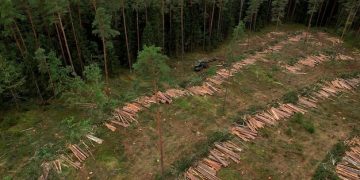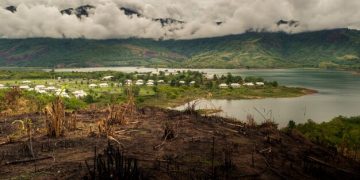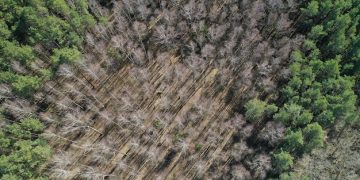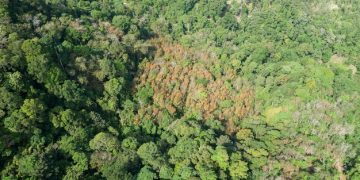Deforestation and Traditional Medicine Loss: US Research Insights
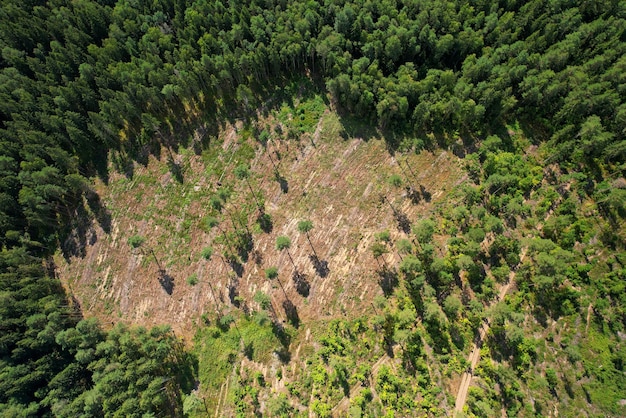
Deforestation and the loss of traditional medicines are critically linked, with ongoing research in the US revealing the extent to which the destruction of forests threatens indigenous knowledge and access to vital medicinal resources.
The accelerating rate of deforestation and the loss of traditional medicines is a pressing concern, particularly highlighted by recent discoveries from US researchers. This article explores the intricate connection between disappearing forests and the potential extinction of invaluable indigenous medical knowledge.
The Alarming Rate of Deforestation and its Global Impact
Deforestation, the clearing of forests for other land uses, continues at an alarming rate worldwide. This destruction has far-reaching consequences, not only for the environment but also for communities that depend on forests for their livelihoods and traditional practices. Understanding the scope of deforestation is crucial to grasping its complex implications.
Extent of Global Deforestation
Globally, vast areas of forests are lost each year due to agriculture, logging, mining, and urbanization. According to the Food and Agriculture Organization of the United Nations (FAO), approximately 10 million hectares of forest are deforested annually. This large-scale clearing of forests poses a significant threat to biodiversity and ecosystem services.
Regional Variations in Deforestation Rates
Deforestation rates vary significantly by region. The Amazon rainforest, Southeast Asia, and parts of Africa are among the areas experiencing the highest rates of forest loss. Each region faces unique drivers of deforestation, ranging from cattle ranching and soy production in South America to palm oil plantations in Southeast Asia. Recognizing these regional dynamics is essential for targeted conservation efforts.
- South America: Driven primarily by cattle ranching and agriculture, especially soy production.
- Southeast Asia: Dominated by the expansion of palm oil plantations.
- Africa: A combination of factors, including agricultural expansion, logging, and charcoal production.
Deforestation has profound environmental consequences, including soil erosion, habitat loss, and climate change. The removal of trees disrupts water cycles, leading to increased runoff and flooding. Deforested areas also release significant amounts of carbon dioxide into the atmosphere, contributing to global warming. Protecting forests is vital for maintaining a stable climate and preserving biodiversity.
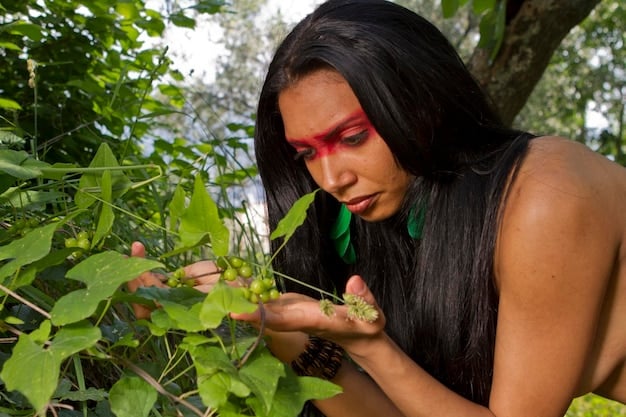
The Critical Link Between Forests and Traditional Medicines
Forests are not only vital for ecological balance but also serve as rich reservoirs of traditional medicinal knowledge. Indigenous communities around the world rely on forests for a wide range of medicinal plants used to treat various ailments. As forests disappear, so does access to these invaluable resources and the traditional knowledge associated with them.
Dependence of Indigenous Communities on Medicinal Plants
For centuries, indigenous communities have developed sophisticated systems of traditional medicine based on the plants found in their local forests. These plants are used to treat a variety of conditions, from common colds to chronic diseases. The knowledge of these medicinal plants is often passed down through generations, representing a deep understanding of the natural world.
Threat to Traditional Knowledge
The destruction of forests poses a direct threat to traditional knowledge. As forests are cleared, medicinal plants become scarce, and the habitats that sustain them are destroyed. This loss of resources disrupts traditional healthcare systems and can lead to the erosion of cultural identity. Preserving forests is essential for protecting both the physical and cultural well-being of indigenous communities.
- Loss of Biodiversity: Deforestation reduces the availability of medicinal plants.
- Erosion of Cultural Identity: Disrupts the transmission of traditional knowledge.
- Threat to Healthcare Systems: Limits access to traditional treatments.
Preserving forests is not just an environmental imperative; it is also a matter of cultural and human rights. Indigenous communities have a right to maintain their traditional practices and access the resources they need for their health and well-being. Recognizing this right is crucial for fostering sustainable development and protecting cultural diversity.
US Researchers Uncovering the Reality of Deforestation Effects on Medicine
Researchers in the United States are increasingly focused on understanding and documenting the link between deforestation and the loss of traditional medicines. These studies are crucial in highlighting the impact of environmental destruction on indigenous communities and the potential loss of valuable medicinal knowledge. Let’s explore some of the key findings and research initiatives.
Documenting Medicinal Plant Use in Deforested Areas
US researchers are conducting ethnographic studies in various parts of the world to document the use of medicinal plants in deforested areas. These studies involve working closely with indigenous communities to record their knowledge of medicinal plants and assess the impact of deforestation on their access to these resources. By documenting this knowledge, researchers hope to preserve it for future generations.
Analyzing the Chemical Properties of Endangered Plants
In addition to documenting traditional knowledge, US researchers are also analyzing the chemical properties of endangered medicinal plants. This research aims to identify the active compounds in these plants that may have potential therapeutic value. By understanding the chemical composition of these plants, researchers can contribute to the development of new drugs and treatments.
- Ethnographic Studies: Documenting traditional knowledge of medicinal plants.
- Chemical Analysis: Identifying active compounds in endangered plants.
- Conservation Efforts: Supporting sustainable management of forest resources.
The research findings emphasize the urgent need for conservation. By highlighting the importance of forests for traditional medicine, these studies can help raise awareness about the far-reaching consequences of deforestation and encourage support for sustainable forest management.
Case Studies: Specific Examples of Medicinal Plant Loss
Examining specific case studies can provide a clearer understanding of the impact of deforestation on traditional medicines. These examples demonstrate the real-world consequences of environmental destruction and the urgent need for conservation efforts. The loss of specific medicinal plants can have devastating effects on indigenous communities.
The Impact on Amazonian Communities
In the Amazon rainforest, deforestation driven by cattle ranching and agriculture has led to the loss of numerous medicinal plants used by indigenous communities. For example, the destruction of forests has reduced the availability of certain species of *Uncaria*, a vine used to treat inflammation and boost the immune system. This plant is crucial for the healthcare of many indigenous groups.
Effects in Southeast Asia
Southeast Asia, particularly Indonesia and Malaysia, has experienced high rates of deforestation due to the expansion of palm oil plantations. This has resulted in the loss of medicinal plants used in traditional Malay and Indonesian medicine. *Eurycoma longifolia*, known as Tongkat Ali, is one such plant that has become increasingly rare due to habitat destruction. It’s traditionally used as an aphrodisiac and general health tonic.
- Amazon Rainforest: Loss of *Uncaria* species due to cattle ranching.
- Southeast Asia: Decreased availability of *Eurycoma longifolia* due to palm oil plantations.
- Africa: Scarcity of *Prunus africana* due to overharvesting and habitat loss.
The loss of these specific medicinal plants can have significant health consequences for indigenous communities. Traditional healers often rely on these plants to treat a range of ailments, and their scarcity can lead to increased health problems and a decline in traditional medical practices. Conservation efforts are essential to protect these valuable resources.
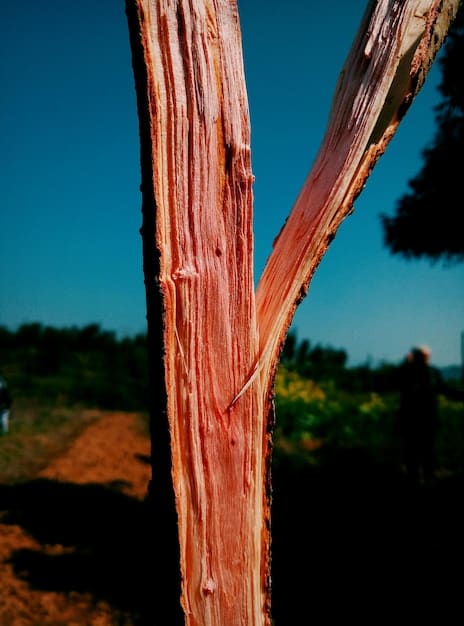
Strategies for Conservation and Sustainable Forest Management
Addressing the issue of deforestation and the loss of traditional medicines requires a multifaceted approach that combines conservation efforts with sustainable forest management practices. Protecting existing forests and promoting responsible land use are essential for preserving biodiversity and supporting indigenous communities.
Implementing Protected Areas
Establishing protected areas, such as national parks and reserves, is a critical strategy for conserving forests. These areas provide a safe haven for medicinal plants and allow indigenous communities to continue their traditional practices. Effective management of protected areas requires collaboration between government agencies, local communities, and conservation organizations.
Promoting Agroforestry and Sustainable Harvesting
Agroforestry, the practice of integrating trees into agricultural systems, can help reduce pressure on natural forests. By planting trees on farms and in rural landscapes, agroforestry provides multiple benefits, including timber, food, and medicinal plants. Sustainable harvesting practices, such as selective logging and reduced-impact logging, can also help minimize the environmental impact of forestry operations.
- Protected Areas: Establishing national parks and reserves.
- Agroforestry: Integrating trees into agricultural systems.
- Sustainable Harvesting: Implementing selective logging practices.
Effective conservation and sustainable forest management requires the active participation of local communities. Indigenous communities often have a deep understanding of forest ecosystems and can play a vital role in monitoring and managing forest resources. Empowering these communities and supporting their traditional practices is essential for long-term conservation success.
Policy Recommendations and Future Research Directions
To effectively address deforestation and its impact on traditional medicines, policymakers and researchers must work together to develop and implement evidence-based strategies. Policy recommendations should focus on promoting sustainable land use, protecting indigenous rights, and supporting conservation efforts. Future research should aim to deepen our understanding of the complex relationships between forests, medicine, and human well-being.
Strengthening Land Use Policies
Governments should strengthen land use policies to prevent deforestation and promote sustainable development. This includes implementing regulations that limit forest clearing, enforcing environmental protection laws, and providing incentives for sustainable land management practices. Additionally, addressing the underlying drivers of deforestation, such as illegal logging and agricultural expansion, is crucial.
Supporting Indigenous Rights and Traditional Knowledge
Recognizing and protecting the rights of indigenous communities is essential for conserving forests and preserving traditional knowledge. Governments should consult with indigenous communities when making decisions about land use and resource management. Supporting traditional healthcare systems and promoting the sustainable use of medicinal plants can also help ensure the well-being of indigenous communities.
- Strengthening Land Use Policies: Implementing regulations and incentives for sustainable land management.
- Supporting Indigenous Rights: Recognizing and protecting the rights of indigenous communities.
- Promoting Interdisciplinary Research: Investigating the links between deforestation, medicine, and human health.
To address deforestation and its impact on human health will require promoting interdisciplinary research. By collaborating across disciplines, researchers can develop a more comprehensive understanding of the complex relationships between forests, medicine, and human well-being. This knowledge can inform the development of effective strategies for conservation and sustainable development, ensuring the preservation of both forests and the invaluable medical knowledge they hold.
| Key Point | Brief Description |
|---|---|
| 🌳 Deforestation Rate | Millions of hectares of forest are lost annually, impacting ecosystems and communities. |
| 🌿 Traditional Medicines | Indigenous communities rely on forests for medicinal plants, vital for their healthcare. |
| 🔬 US Research | Researchers document plant use and chemical properties to preserve traditional knowledge. |
| 🛡️ Conservation | Strategies include protected areas, agroforestry, and community involvement to manage forests effectively. |
Frequently Asked Questions
Deforestation is the clearing of forests for other land uses like agriculture and urbanization. It’s concerning because it leads to habitat loss, climate change, and the disruption of local ecosystems.
Deforestation reduces the availability of medicinal plants used by indigenous communities. This loss threatens their traditional healthcare systems and cultural practices.
US researchers are documenting medicinal plant use, analyzing plant properties, and advocating for conservation to preserve traditional knowledge and plant species.
Conservation strategies include establishing protected areas, promoting agroforestry, and implementing sustainable harvesting practices to maintain forest health and plant availability.
Individuals can support sustainable products, advocate for responsible land use policies, and support organizations working to protect forests and indigenous rights.
Conclusion
The intertwined fate of forests and traditional medicines calls for urgent action. By understanding the research findings and implementing sustainable practices, we can protect biodiversity, traditional knowledge, and the health of both the planet and its people.
